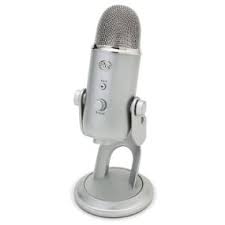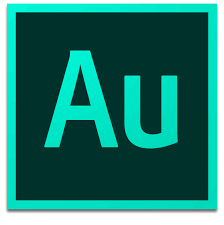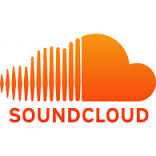Resource:How to start a podcast series
Anybody can start a podcast series. It really takes three main things to get started; equipment, content, and a podcasting platform. That’s it! To give a better understanding of how each works we will break each main ingredient into it’s own section and discuss your options.
Contents
Section 1: Equipment
You can’t start a podcast without first having the equipment to record the content. For all intents and purposes, anything that can record sound digitally can make you a podcast. However, it is nice to have a list of equipment necessary for the task. So here is your list.
- Microphone
- Computer
- Audio Editing Software
- Speakers and/or Headphones
This simple list can essentially get anybody started in creating a podcast. Let's break it down a bit further:
Microphone:
A good microphone is an important part of your recording. Since a podcaster’s intent is to reach a mass audience, high quality sound should be a big priority. A microphone like “Blue Yeti” works great because it is a USB microphone that connects directly into your computer to record sound digitally. If you are recording your podcast in a room this should work great. The only thing you would need to worry about is avoiding echo. This can be done by recording in a small room or a big room with furniture to absorb the sound waves. If you are recording outdoors, make sure you use a microphone with a windsock could help prevent wind-shearing in your audio recording. It is important to do your research when selecting a microphone, because your purpose should be to get one that allows you to get the quality of sound necessary for your podcast based on how you plan on producing your content.
Computer:
Any modern computer you have should work fine. Most modern computers have the capacity to handle the storage and playback of audio data. However, depending on the software you use, certain minimum requirements will be required of your machine. Depending on how you plan to store your raw data of the audio and how long you plan on keeping it, an external hard drive may also be beneficial to keep your computers hard drive free of unnecessary data storage. The computer to your podcast series is like the workbench to the craftsman. Your productivity and quality of final product can all be affected by the one you use.
Software:
This almost goes hand-in-hand with your computer selection. There are a number of free online audio editing softwares such as Audacity, but its disadvantage is that it crashes often, sometimes resulting in the loss of valuable audio files. We believe a software application such as Adobe Audition will work the best. It does come with an individual monthly cost of around $20 per month, but can grow along with your podcast series. If you're a student, Adobe has a student discount on all of their Creative Cloud plans, which could be incentive to give their program a shot. If there is a worry about adding an additional monthly cost, software such as WavePad is a one-time cost of about $95 that can also grow with your podcast series. However, as new updates are implemented to WavePad, the updated software would need to be newly purchased whereas Adobe Audition will always be up to date with your monthly app subscription.
Speakers and/or Headphones:
Listening to, editing, or even knowing your podcast the way your users do is predicated on your ability to listen and fine tune it yourself first. It would be extremely beneficial to you to edit audio while wearing headphones. Not only will this give you a great idea of what your sound quality is like, but it will also assisnt in blocking out any other sound that may prevent you from hearing correctly or distract you.
Section 2: Content
Determining what your content’s going to look like can be a very exciting process! Every podcast is different. Your podcast series can explore one particular subject in depth, or it can be more of a variety show, addressing many much broader subjects with a loose central theme. Figuring out what subject you’re going to make uniquely your own is a huge, and very enjoyable part of making a podcast. It is important, however, to know which direction you want to go in, and stick to it in order to develop your following around it.
Podcasts can be a lot of fun to listen to, but many content creators make the mistake of assuming that there’s not much to a podcast other than speaking about a subject. While this is an enormous part of making a podcast, if that’s all it is, it can get pretty stagnant really quickly. There are, however, a few little tricks making a podcast more interesting and lively.
First, interviews are always welcomed and recommended. Not only are interviews informational and insightful, but they also provide a different dynamic. Sometimes, it can be more appealing or effective to listen to people discuss, debate, or banter about a topic rather than listen to the same voice drone on about it for the entire duration of the episode. Interviews are incredibly useful tools, but one should beware that they can be a little unreliable sometimes. Always stay organized and schedule your interviews far in advance, so if something comes up or goes wrong, they can easily be rescheduled or replaced. On a similar note, it is also important to have a backup plan in case a particular interview doesn’t work out. Always be prepared.
Music is another great way to spice up your podcast. Maybe you have a signature tune that you play at the intro and outro of each show, or maybe you play music in the background appropriate to the situation or subject you’re talking about. Either way, music can be an effective way to add that extra something to your podcast. That being said, it is very important that you make sure you’re allowed to utilize the song or portion of a song you decide to go with. There is nothing worse than have your podcast flagged and taken down from the Internet because of copyright issues. You can easily find out whether or not an issue of this nature would ensue by going online and checking out the copyright details of the song. There are many quick links that do this for you if you type it in a search engine. If you’re very serious about using a copyrighted song, it is possible if you obtain permission from the publisher and record company, but be warned, this is typically a difficult endeavor.
Another way to liven up a podcast is to add sound effects. This sounds a little cheesy, but when you look closer, you will see that this isn’t at all the case. As there are no visuals in a podcast, sound effects can do an excellent job at enhancing the experience for the listener and drawing them further into the world you are creating. You definitely don’t want to do anything over the top, but subtle little sounds can make a world of difference. For example, if you’re verbally painting the picture of being in a scenic outdoor place surrounded by nature, birds quietly chirping, water rushing, or leaves rustling can add a lot to the listener’s experience. Sound effects of all kinds are found easily and frequently online.
A great idea combined with all of these useful tools can make for a captivating podcast series with unique, outstanding content. With your materials ready and your content figured out, you’re ready to make your podcast!
Section 3: Platform
After you have your completed podcast, you’ll have to determine how you want to distribute it and which platform(s) will work best for you. There are a variety of platforms to choose from, each with their own benefits.
You should select your platform(s) based on:
- Your budget
- The subject of your podcast
- The size/demographic of your target audience
If you are familiar with Wordpress, Blubrry might be the place for you. Similarly to Wordpress, Blubrry is a hosting company, although this one specializes in all things audio or video. Blubrry is capable of processing your high-data media files and will host and promote your podcast. A page for your podcast is easily established and maintained. However, the disadvantage of Blubrry is that it can be quite pricey, sometimes costing you $10/GB per month, which tends to be higher than average.
Another option for you could be Stitcher Radio, which is essentially a curation platform. Think of it as Pandora Radio for podcasts; you select a topic and it generates a list of podcasts based on that, much like Pandora does with music. You can apply with Stitcher to become a content provider, or you can use the RSS Feed on your Soundcloud account to distribute it to Stitcher.
Depending on the topic of your podcast, you can sometimes find popular websites that feature a similar subject or genre and that will let you post your podcast on their sites to gain a larger following. Similarly, you can sometimes partner with local radio stations. If they are interested in your content and it is somehow related to your community, you may be able to work out a deal where they host your podcast on their website once a week, and advertise it a few times throughout the rest of the week on air.
Creating a Podcast Series: The Roadmap
Written by Keeyana Kian, Char'nae Davis, and Brian Hensley



